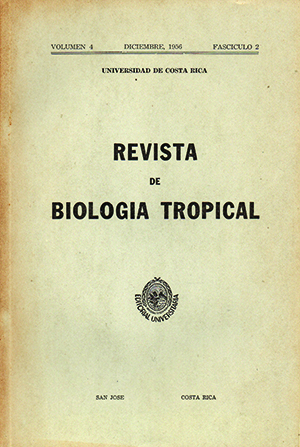Abstract
A study is presented of lesions caused on laboratory animals by the Costa Rican strain of Toxoplasma gondii known as "La Esperanza" after the area where it was found, and which is kept alive in mice. Lats of four white mice, white rats, and guinea pigs were used, from stocks raised in the laboratory for several generations to insure their health. Each mouse was given an inoculation of 100,000 parasites; each rat, 200,000, and each guinea pig 300,000. Some of the inoculated animals died from the infection, the rest were killed in a gas chamber. In all cases autopsies were made and organs (kidney, spleen, 1iver, lung, heart and brain) were fixed in 10% formalin and embedded in paraffin. Sections were stained with the usual hematoxylin-cosin combination, with Laidlaw's silver carbonate, and Gallego's triple stain. White mice were found to be highly susceptible to toxoplasmosis. Individuals died regulary in six days, a fact already noted in keeping the strain alive. Two of the guinea pigs died at the same time and two were killed later. Rats showed more resistance, and all were killed after some time. Histological examination showed animals to be divided in two group according to the lesions found. Acute cases showed parenchymatic pathotic phenomena, and predominantly exudative reaction in mesenchymo-vascular structures. In subacute or chronic cases parenchymatoses were also present, but reticulo-endothelial proliferative reaction prevailed over the exudative. Pseudocysts were found in the lumen of renal tubules, a fact considered of much importance, as it would establish the infectivity of urine. Another important finding was the presence of an argyrophilic pseudocyst membrane, confirming other author's opinions.##plugins.facebook.comentarios##
Downloads
Download data is not yet available.


